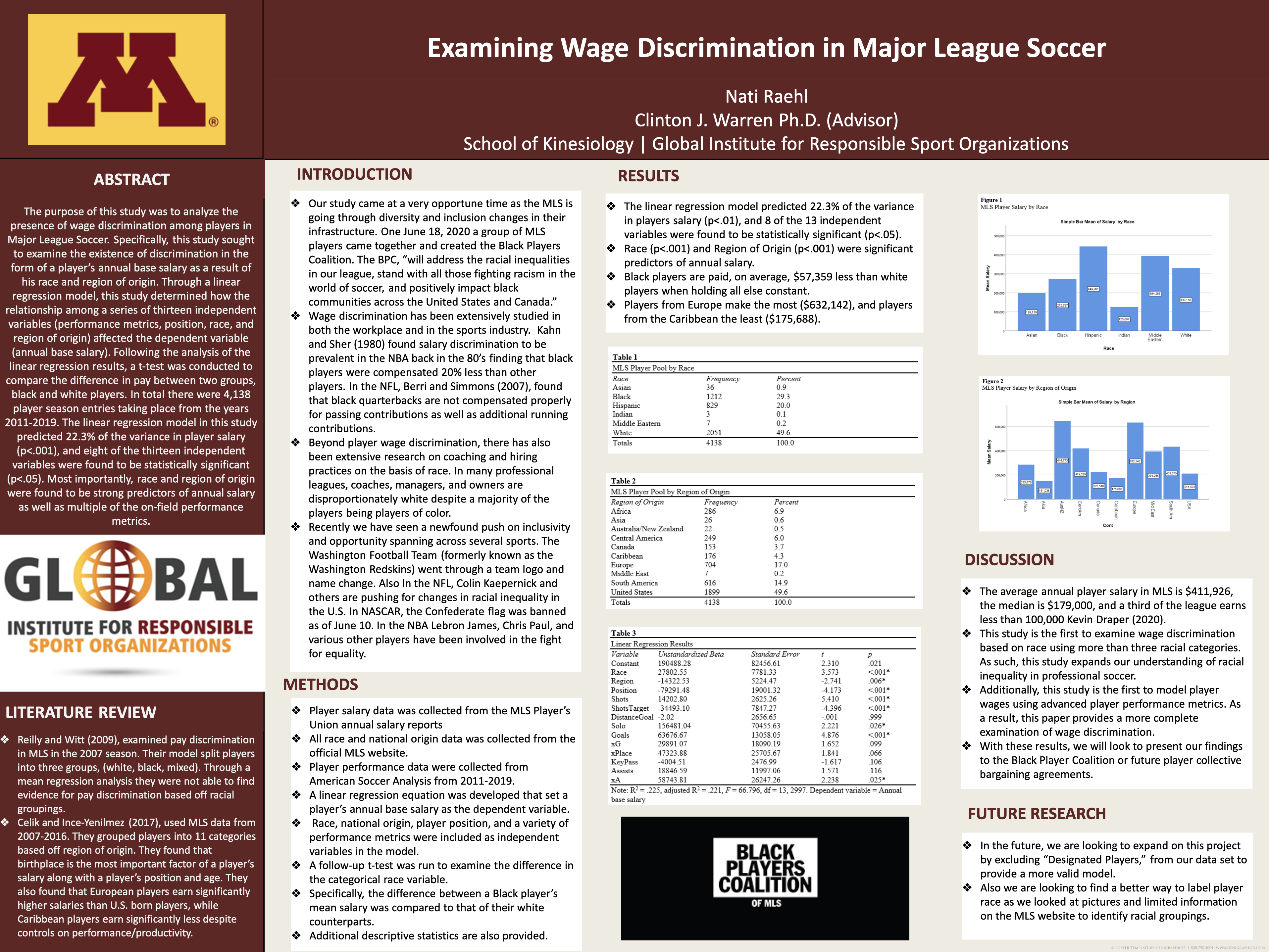Examining Wage Discrimination in Major League Soccer
The purpose of this study was to analyze the presence of wage discrimination among players in Major League Soccer. Specifically, this study sought to examine the existence of discrimination in the form of a player’s annual base salary as a result of his race and region of origin. Through a linear regression model, this study determined how the relationship among a series of thirteen independent variables (performance metrics, position, race, and region of origin) affected the dependent variable (annual base salary). Following the analysis of the linear regression results, a t-test was conducted to compare the difference in pay between two groups, black and white players. In total there were 4,138 player season entries (Africa 286, Asia 26, Australia/New Zealand 22, Central America 249, Canada 153, Carribean 176, Europe 704, Middle Eastern 7, S. America 616, and USA 1,616) taking place from the years 2011-2019. The linear regression model in this study predicted 22.3% of the variance in player salary (p<.001), and eight of the thirteen independent variables were found to be statistically significant (p<.05). Most importantly, race and region of origin were found to be strong predictors of annual salary as well as multiple on-field performance metrics. Results of the t-test determined that black players receive significantly less pay than white players with a mean salary difference of $57,358. When taken collectively, these results indicate this is true even when accounting for on-field performance and player position. Furthermore, an analysis of the mean values of salary by region of origin indicated that players from the Carribean earn the least ($175,688), while players from Europe, South America, and Central America earned the most ($632,142; $433,575; and $419,289 respectively).






